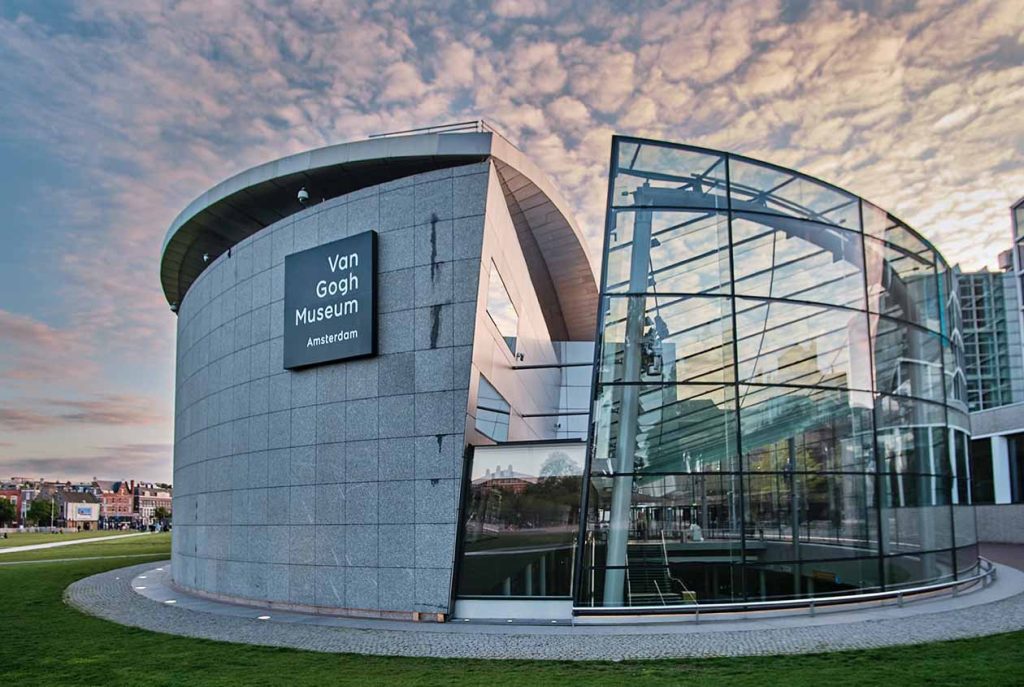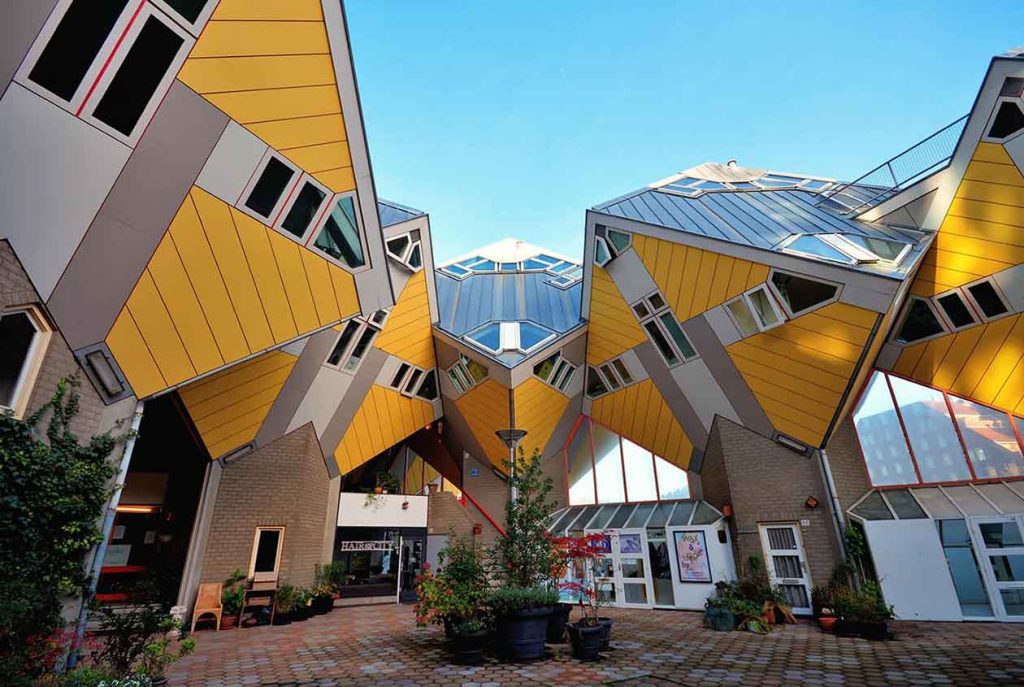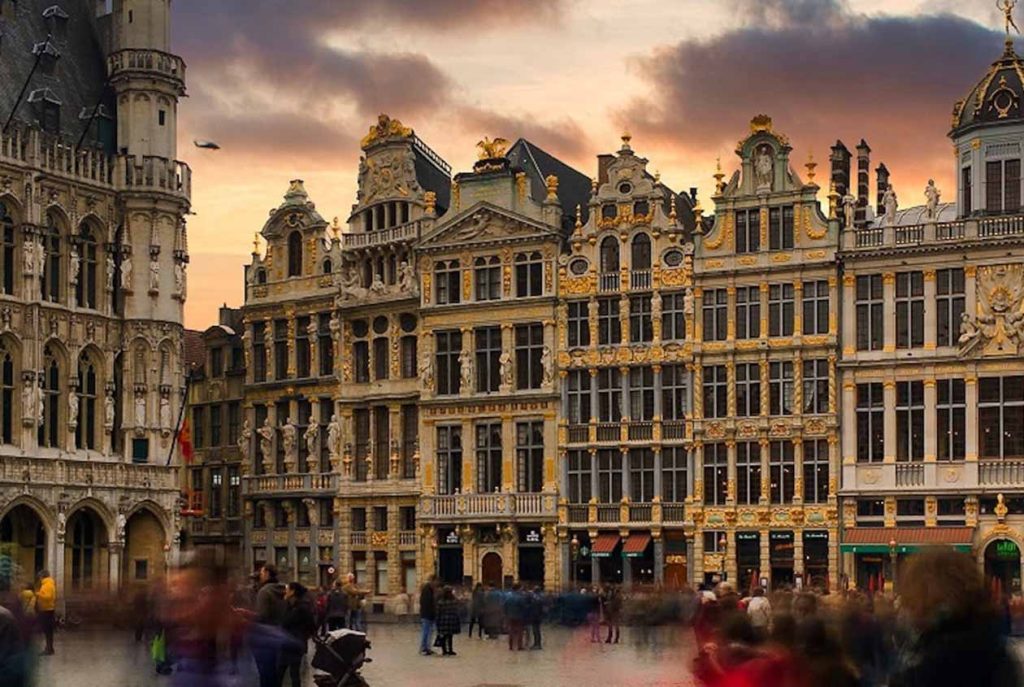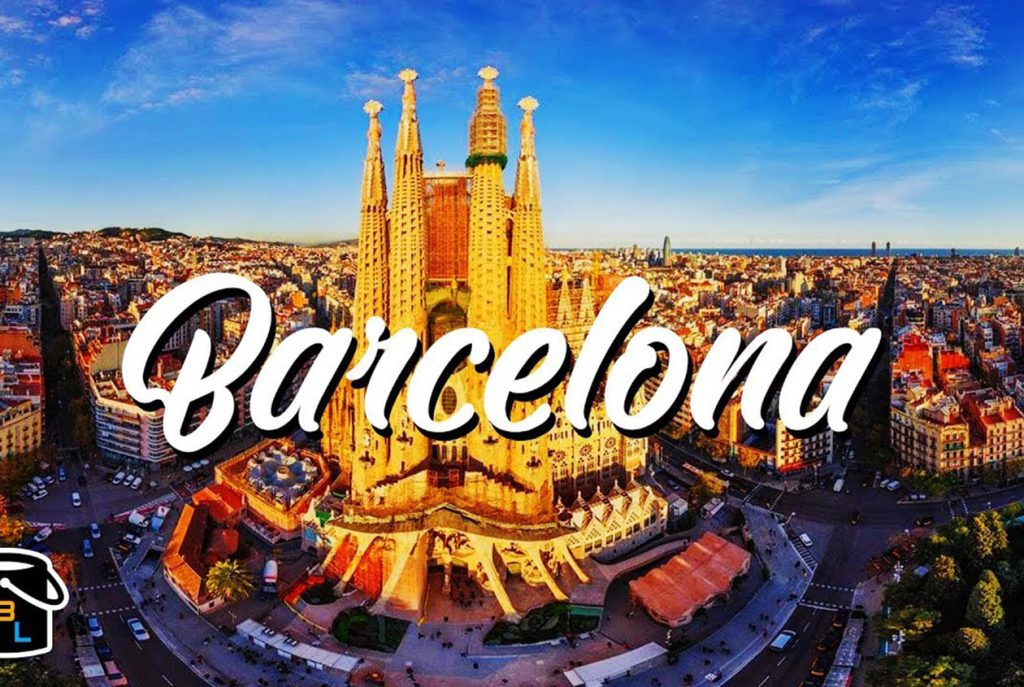
From the whimsical creations of Antoni Gaudí to the sun-drenched beaches of Barceloneta, this city captivates visitors with its diverse attractions and infectious energy. As I embarked on my journey through Catalonia’s capital, each corner revealed a new story: from ancient Roman ruins in the Gothic Quarter to the modernist marvels along Passeig de Gràcia.
Unveiling Gaudí’s Masterpiece: La Sagrada Família
Barcelona is synonymous with the visionary genius of Antoni Gaudí, and nowhere is his brilliance more evident than in the iconic La Sagrada Família. This basilica, still under construction after more than a century, is a testament to Gaudí’s unique architectural style and religious devotion.
Location and How to Get There
La Sagrada Família is located in the Eixample district of Barcelona at Carrer de Mallorca, 401. The easiest way to reach this architectural marvel is by using the city’s efficient public transport system:
– Metro: The basilica has its own metro stop, Sagrada Família, which is served by lines L2 (purple) and L5 (blue). The metro is my preferred mode of transport as it is fast, affordable, and conveniently drops you right at the site.
– Bus: Several bus lines, including 19, 33, and 34, stop near the basilica. While slightly slower due to traffic, buses offer a scenic route through the city.
– Walking/Cycling: If you’re staying nearby, walking or cycling can be a pleasant way to see more of the city’s architecture and vibe.
Discounts, Ticket Prices, and Booking Platforms
Tickets to La Sagrada Família are highly sought after, and I recommend booking in advance to avoid long lines and potential disappointment:
– Basic Ticket: €26 (adults), which includes access to the basilica and the museum.
– Guided Tour: €30, providing a deeper understanding of Gaudí’s vision and the basilica’s history.
– Audio Guide: €30, a self-paced option that includes detailed commentary.
Discounts:
– Students, seniors (over 65), and children (under 11) receive discounted rates, which can be checked on the official website.
My Personal Experience and Recommendation Rating
Walking into La Sagrada Família, I was immediately struck by the sheer scale and intricacy of the structure. The towering spires, each uniquely adorned, rise majestically against the Barcelona skyline. Inside, the sunlight streaming through the vividly colored stained glass windows created a kaleidoscope of colors, bathing the interior in a surreal, almost divine light.
One of the highlights of my visit was ascending the Nativity Tower. The panoramic views of Barcelona were breathtaking, providing a unique perspective of the city’s grid-like layout and the distant sea. The climb itself, while a bit narrow and winding, added to the sense of adventure.
I was also captivated by the museum within the basilica, which showcases Gaudí’s models, sketches, and photographs, offering insight into his meticulous planning and innovative techniques.
Overall, my visit to La Sagrada Família was an unforgettable experience. I give it a 5/5 recommendation rating. The basilica is a must-visit, not just for its architectural grandeur but also for the sense of spiritual awe it inspires.
Discovering History at the Gothic Quarter
Stepping into the Gothic Quarter, or Barri Gòtic, is like traveling back in time. This historic neighborhood, with its narrow medieval streets and stunning Gothic architecture, offers a fascinating glimpse into Barcelona’s rich past.
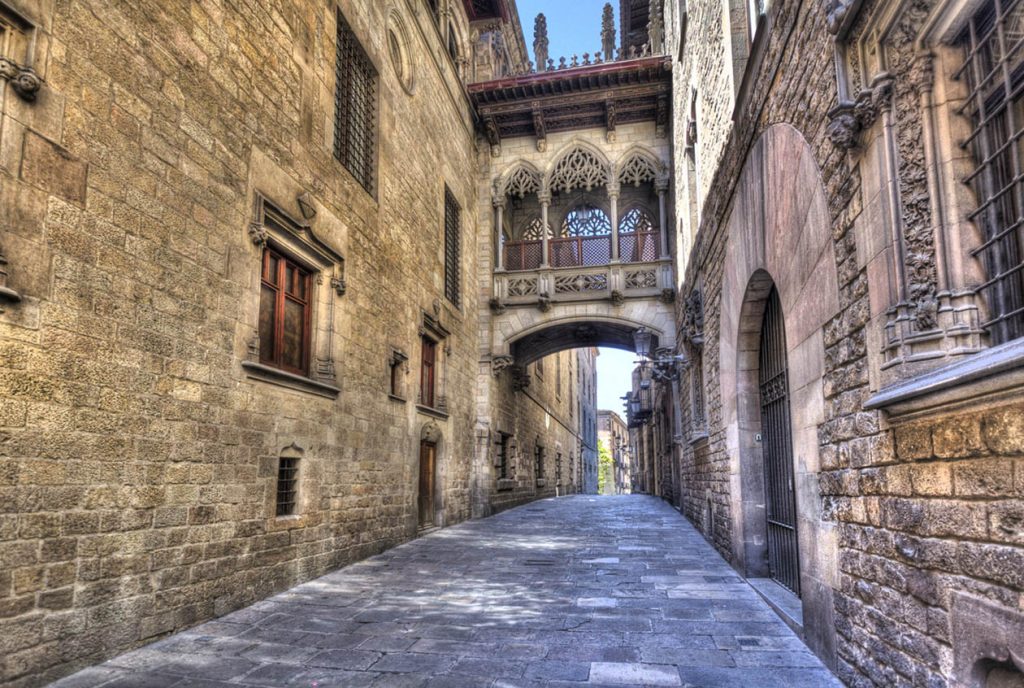
Location and How to Get There
The Gothic Quarter is centrally located in the heart of Barcelona, stretching from La Rambla to Via Laietana, and from the Mediterranean seafront to Ronda de Sant Pere. It’s easily accessible by various means of transportation:
– Metro: The closest metro stations are Jaume I (L4, yellow line) and Liceu (L3, green line). Both stations are just a short walk away from the quarter.
– Bus: Numerous bus lines serve the area, including 45, 59, and V17.
– Walking: If you’re already in the city center, the Gothic Quarter is within walking distance from popular landmarks like Plaça de Catalunya and La Rambla.
Discounts, Ticket Prices, and Booking Platforms
While wandering the Gothic Quarter itself is free, some of its attractions charge an entry fee:
– Barcelona Cathedral: Entry is €9, but you can access the cloister and attend mass for free.
– Picasso Museum: Tickets are €12, with free admission on Thursday afternoons and the first Sunday of every month.
– Basilica of Santa Maria del Mar: Entry is free, but guided tours cost €8.
Discounts:
– Many attractions offer discounts for students, seniors, and children.
– The Barcelona Card provides free entry and discounts to many sites in the Gothic Quarter.
My Personal Experience and Recommendation Rating
Exploring the Gothic Quarter was like uncovering layers of history with every step. The labyrinthine streets, lined with centuries-old buildings, led me to hidden squares, charming boutiques, and quaint cafés.
The Barcelona Cathedral, with its stunning Gothic façade and serene cloister, was a highlight. I spent a peaceful hour wandering the cloister’s garden, home to thirteen white geese, which are a symbol of the saint Eulalia.
Another memorable stop was the Plaça del Rei, a beautiful medieval square where I sat and absorbed the historical ambiance. The nearby Museu d’Història de Barcelona (MUHBA) provided a fascinating journey through the city’s history, with its well-preserved Roman ruins and medieval artifacts.
I also enjoyed visiting the Picasso Museum, housed in a series of stunning medieval palaces. The museum’s extensive collection of Picasso’s works offered a deep dive into the artist’s early years and development.
My stroll through the Gothic Quarter was not complete without experiencing its vibrant nightlife. Tapas bars and lively squares came alive in the evening, offering a perfect end to a day of exploration.
Overall, the Gothic Quarter is a 4.5/5 recommendation rating. Its blend of history, culture, and charm makes it an essential part of any Barcelona itinerary.
Embracing Art and Nature at Park Güell
Park Güell is another masterpiece by Antoni Gaudí, a whimsical park that blends art, nature, and architecture in a stunningly unique way. This UNESCO World Heritage Site offers panoramic views of Barcelona and is a testament to Gaudí’s imaginative genius.
Location and How to Get There
Park Güell is situated on Carmel Hill in the Gràcia district of Barcelona. The park is slightly further from the city center but still easily reachable:
– Metro: The closest metro station is Lesseps (L3, green line). From there, it’s a 20-minute uphill walk to the park.
– Bus: Buses 24 and 92 stop near the park entrance. This option is more direct and less strenuous than walking.
– Taxi/Ride-Hailing: For convenience, you can take a taxi or use ride-hailing services like Uber or Cabify directly to the park entrance.
Discounts, Ticket Prices, and Booking Platforms
Admission to Park Güell requires a ticket, especially for the Monumental Zone where the most famous Gaudí creations are located:
– Basic Ticket: €10 for adults, €7 for children (7-12 years) and seniors (over 65).
– Guided Tour: €21, includes a detailed tour of the park and its history.
Discounts:
– Children under 6 enter for free.
– Reduced prices are available for students and residents of Barcelona.
My Personal Experience and Recommendation Rating
Visiting Park Güell felt like stepping into a fairy tale. The park’s vibrant mosaics, organic shapes, and lush gardens created an otherworldly atmosphere that captivated me from the moment I entered.
The Monumental Zone, with its famous Dragon Stairway and Hypostyle Hall, was a visual feast. The dragon, covered in colorful mosaic tiles, is an iconic symbol of Gaudí’s work. Climbing the stairway, I found myself surrounded by undulating forms and intricate designs that showcased Gaudí’s unique style.
One of my favorite spots was the Greek Theatre, also known as the Nature Square, which offers stunning views of Barcelona and the Mediterranean Sea. Sitting on the serpentine bench, also covered in vibrant mosaics, I took in the panoramic vistas while appreciating the creativity that went into its design.
Exploring the rest of the park, I discovered hidden pathways, beautiful gardens, and even Gaudí’s former residence, now a museum dedicated to his life and work. The blend of natural and architectural elements throughout the park made for a serene and inspiring experience.
Park Güell’s magical ambiance and breathtaking views earn it a 5/5 recommendation rating. It’s a must-visit for anyone wanting to experience Gaudí’s genius and Barcelona’s natural beauty.
Marveling at Modernism: Casa Batlló
Casa Batlló is one of Antoni Gaudí’s most celebrated buildings, a modernist masterpiece that stands out even among Barcelona’s many architectural wonders. With its fantastical design and innovative use of materials, Casa Batlló is a true testament to Gaudí’s creative genius.
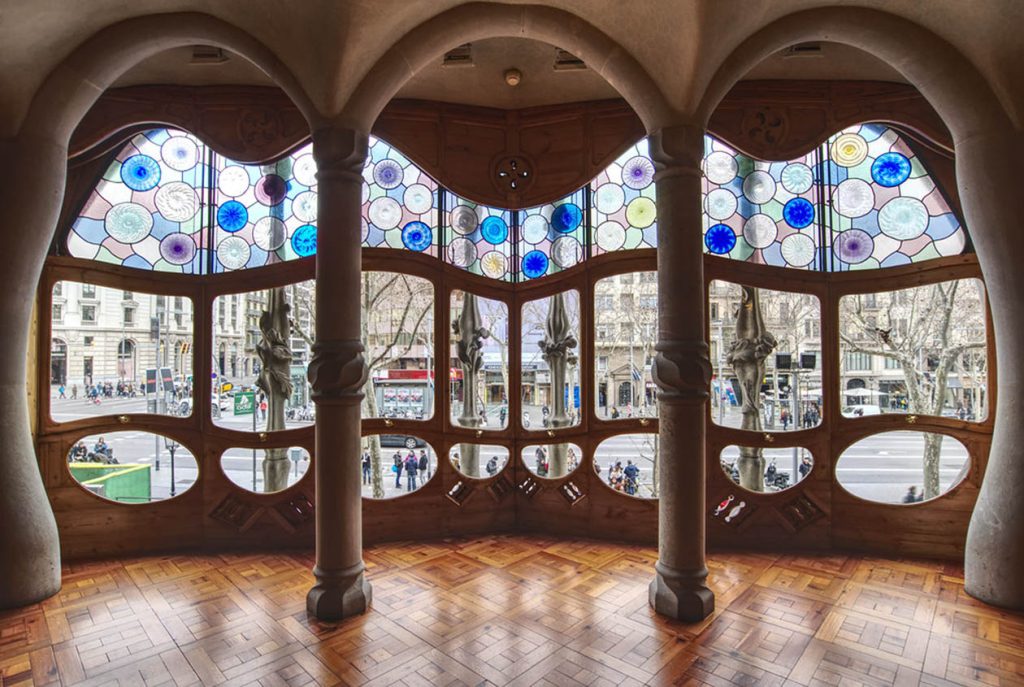
Location and How to Get There
Casa Batlló is centrally located on Passeig de Gràcia, one of Barcelona ‘s most famous avenues, at number 43. It’s easily accessible by various modes of transportation:
– Metro: The closest metro stations are Passeig de Gràcia (L2, L3, and L4) and Diagonal (L3 and L5). The building is just a short walk from either station.
– Bus: Numerous bus lines, including 7, 22, and 24, stop near Casa Batlló.
– Walking: If you’re in the city center, Casa Batlló is within walking distance from Plaça de Catalunya and other major attractions.
Discounts, Ticket Prices, and Booking Platforms
Tickets to Casa Batlló can be purchased online or at the entrance, but booking in advance is recommended to avoid long lines:
– Blue Ticket: €35, includes access to all rooms and the augmented reality SmartGuide.
– Silver Ticket: €43, includes skip-the-line access, the SmartGuide, and access to an exclusive private hall.
– Gold Ticket: €49, includes all Silver Ticket benefits plus priority access, a vintage photo, and a gift.
Discounts:
– Children under 7 enter for free.
– Students, seniors, and people with disabilities receive discounted rates.
My Personal Experience and Recommendation Rating
Stepping into Casa Batlló felt like entering a dream world. Gaudí’s imaginative design transformed the building into a living, breathing entity with flowing forms and vibrant colors.
The first thing that caught my eye was the façade, with its undulating curves and mosaic tiles that shimmered in the sunlight. The balconies, resembling masks or skulls, and the roof, evoking the scales of a dragon, made the exterior of Casa Batlló truly unique.
Inside, the attention to detail was astounding. The Noble Floor, which was the former residence of the Batlló family, featured a large central hall with stunning stained glass windows and a beautiful fireplace alcove designed for intimate gatherings. The light well, with its shades of blue tiles, created a magical play of light and shadow.
One of the highlights of my visit was the Dragon’s Back, the roof terrace that offers panoramic views of Barcelona. The undulating roof tiles and the spine-like ridge were inspired by the legend of Saint George and the dragon, a recurring theme in Gaudí’s work.
The SmartGuide, an augmented reality device, enriched my experience by providing historical context and bringing Gaudí’s creative process to life. It was fascinating to see how the building’s design was influenced by natural forms and mythology.
Overall, Casa Batlló is a mesmerizing blend of art, architecture, and innovation. I give it a 5/5 recommendation rating. It’s an essential stop for anyone interested in Gaudí’s work and Barcelona’s modernist heritage.
Exploring the Historic Heart: Montjuïc Castle
Montjuïc Castle, perched atop Montjuïc Hill, offers a blend of history, architecture, and stunning views over Barcelona and its harbor. This 17th-century fortress has played a pivotal role in the city’s history and now serves as a cultural landmark and viewpoint.
Location and How to Get There
Montjuïc Castle is located on Montjuïc Hill, providing commanding views of Barcelona and the Mediterranean Sea. The castle can be reached by various means:
– Cable Car: The Montjuïc Cable Car (Telefèric de Montjuïc) offers a scenic ride from the base of the hill to the castle entrance. It’s a fun and picturesque way to reach the top.
– Funicular: The Montjuïc Funicular, accessible from Paral·lel metro station (L2 and L3), takes you up to the Parc de Montjuïc, from where you can walk or take a bus to the castle.
– Bus: Bus lines 150 and 55 stop near the castle. Bus 150 is particularly convenient as it goes directly to the castle entrance.
– Walking: For the adventurous, walking up Montjuïc Hill is an option. The paths are well-marked and offer beautiful views and gardens along the way.
Discounts, Ticket Prices, and Booking Platforms
Admission to Montjuïc Castle is affordable, with tickets available at the entrance or online:
– General Admission: €5.
– Reduced Admission: €3, for students, seniors, and groups.
– Free Entry: The first Sunday of each month and every Sunday after 3 PM.
Discounts:
– Free entry for children under 16 and for everyone on the first Sunday of each month.
My Personal Experience and Recommendation Rating
My visit to Montjuïc Castle was a journey through Barcelona’s military history combined with breathtaking vistas of the city and sea. The cable car ride up the hill was a highlight, offering panoramic views of Barcelona’s skyline and coastline.
The castle itself, with its sturdy stone walls and strategic location, exudes a sense of historical significance. Exploring the battlements, I could imagine the castle’s role in defending the city through various historical conflicts.
One of the castle’s most striking features is the panoramic view from the top. From here, I had an unobstructed view of Barcelona’s sprawling cityscape, the bustling port, and the distant mountains. The views alone make the visit worthwhile, especially around sunset when the city is bathed in a golden glow.
Inside the castle, exhibitions and informational displays provided insight into its history and significance. I particularly enjoyed the display on the Spanish Civil War, which shed light on a turbulent period in Spain’s history and the castle’s role as a military prison.
Strolling through the castle grounds, I appreciated the peaceful atmosphere and the well-preserved architecture. The gardens surrounding the castle added a touch of serenity to the visit, with blooming flowers and shaded pathways perfect for a leisurely walk.
Montjuïc Castle is a 4.5/5 recommendation rating. It’s an ideal destination for history enthusiasts, photography lovers, and anyone seeking stunning views of Barcelona.
Indulging in Art Nouveau: Palau de la Música Catalana
The Palau de la Música Catalana is a jewel of Catalan Art Nouveau, renowned for its stunning architecture and vibrant cultural offerings. This concert hall, designed by the architect Lluís Domènech i Montaner, is a UNESCO World Heritage Site and a must-visit for music and architecture lovers.
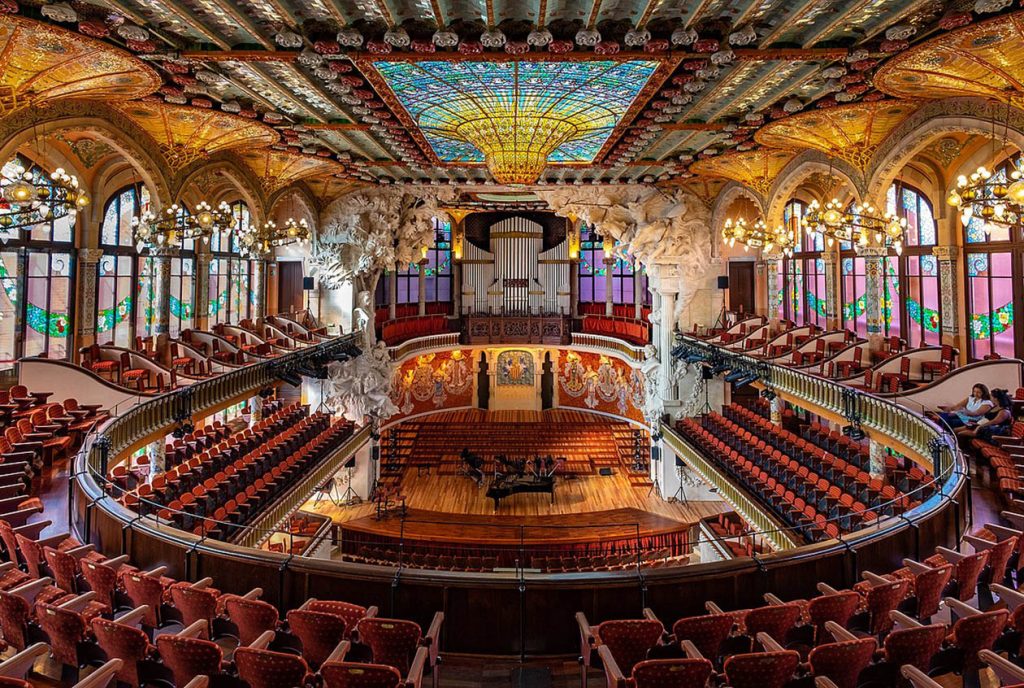
Location and How to Get There
The Palau de la Música Catalana is located in the El Born neighborhood, at Carrer Palau de la Música, 4-6. It’s easily accessible by various modes of transportation:
– Metro: The closest metro station is Urquinaona (L1 and L4). The concert hall is just a short walk from the station.
– Bus: Bus lines V15, V17, and 45 stop nearby.
– Walking: The Palau is within walking distance from Plaça de Catalunya and other central landmarks.
Discounts, Ticket Prices, and Booking Platforms
Tickets for concerts and guided tours can be purchased online or at the box office:
– Guided Tour: €20 for adults, €11 for children (under 10 years), which includes a 55-minute tour of the hall.
– Concert Tickets: Prices vary depending on the performance, ranging from €15 to over €100.
Discounts:
– Reduced prices for students, seniors, and groups.
– Discounts are available for early bookings and certain performances.
My Personal Experience and Recommendation Rating
My visit to the Palau de la Música Catalana was a feast for the senses. The building’s façade, adorned with intricate mosaics and sculptures, set the stage for what awaited inside.
The guided tour was an enriching experience, providing detailed insights into the building’s history and architectural features. The tour began in the grand foyer, with its ornate columns and stained glass windows, and continued through the main concert hall, which is the true highlight of the visit.
The concert hall itself is a masterpiece of Art Nouveau design. The stunning stained glass skylight, designed to resemble a sun, bathes the hall in natural light and creates a magical ambiance. The ornate stage, decorated with floral motifs and muses, added to the hall’s enchanting atmosphere.
One of the most memorable moments of the tour was the opportunity to sit in the audience and listen to a short musical performance. The acoustics of the hall were exceptional, and the music brought the space to life in a way that words alone cannot describe.
After the tour, I spent some time in the café and gift shop, where I found unique souvenirs and enjoyed a coffee while admiring the building’s exterior.
The Palau de la Música Catalana is a 5/5 recommendation rating. It’s a must-visit for anyone interested in architecture, music, or cultural history, offering a truly immersive and inspiring experience.
